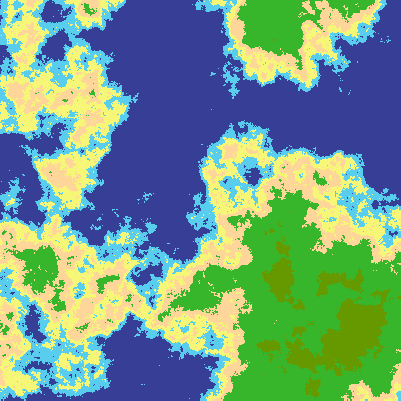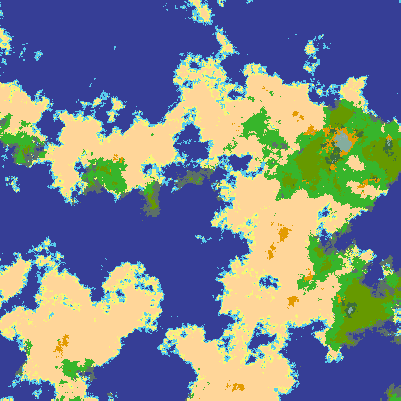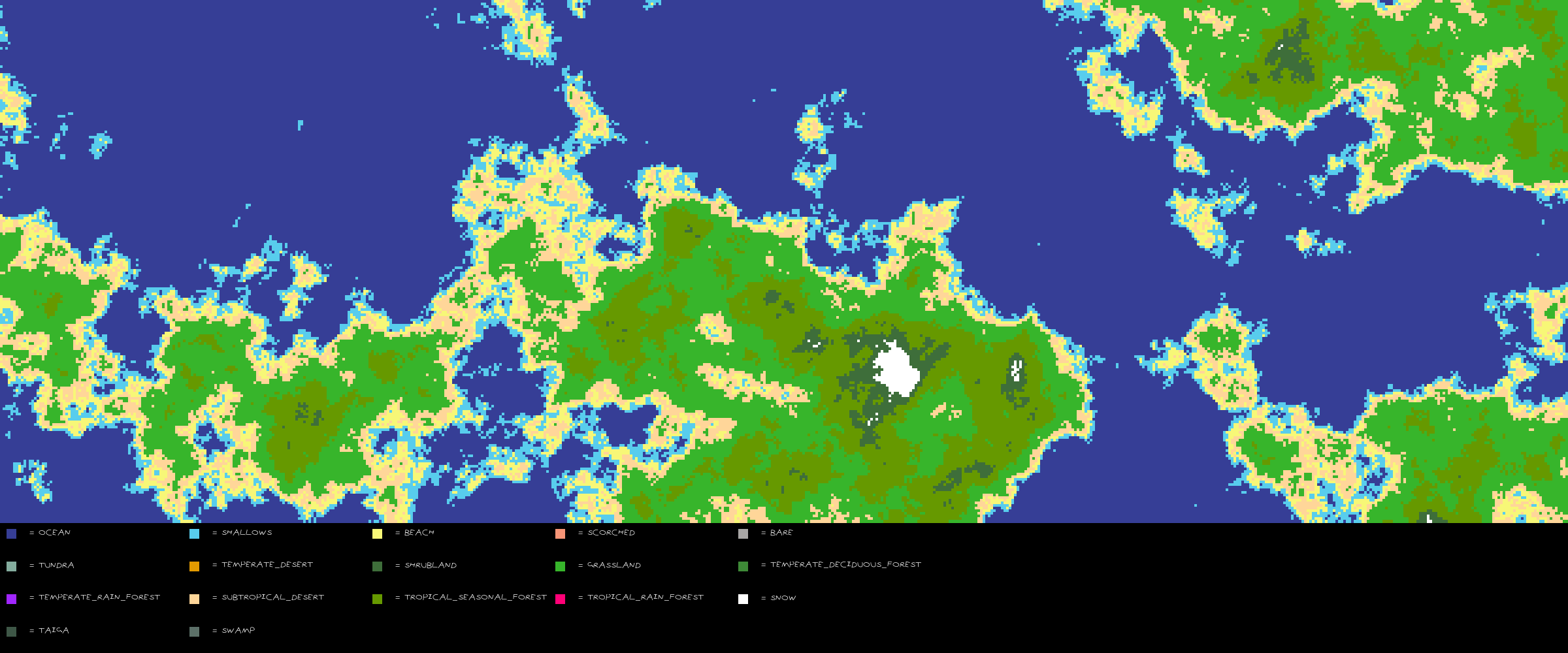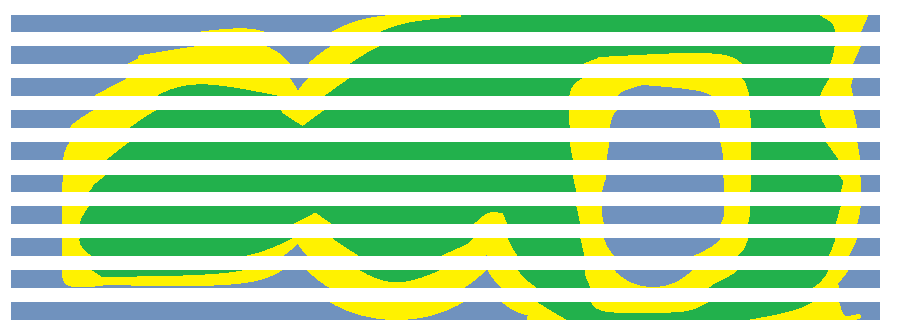A generator of roguelike style terrain maps made for fun.
To use the program you'll require an installation of Python and then you'll need to install the requirements listed in the requirements.txt.
To do this you can run pip install -r requirements.txt. This will install all the requirements and then you can run python perlin-noise-2d-terrain-generation to run the program with its default settings.
I recommend that you use a Virtual Environment for this and other Python applications so that your main Python installation can be kept clean of program-specific requirements.
python perlin-noise-2d-terrain-generation- This will give you a simple map with the default values.
- Use the
-hflag to get a list of things to tweak.
To understand how this works and to also be able to use the generator properly, a little theory is required. This program works by generating two noise maps - one for elevation, another for moisture. By interpreting these noise maps together, realistic-looking terrain can be generated.
We'll begin by exploring what a noise map even is.
You're probably familiar with what a sound is and you've probably also seen a sound represented in wave form. A wave looks like this:
It's often seen on heart rate monitors and can be smooth as depicted above, or sharp and short. On a heart rate monitor it's often sharp and short.
Measuring a wave
A wave can be put on a graph and measured. You see the grey line? That's the baseline and it represents 0. Everything above it is a positive number, everything below it is a negative number:
Interpreting a wave
Now that we have a wave measured, we can choose to interpret its values however we like:
Here, we interpret the wave like this:
| Range | Type | Color |
|---|---|---|
< 0 |
Water | Blue |
< 1 |
Sand | Yellow |
< 2 |
Grass | Green |
Look at the wave from above
Now that we have our colored wave, look at it from above:
Now imagine many waves all side by side together:
And now if we put them close together we get a map:
Representing a wave as a list of numbers
In programming terms, a wave is to us simply a list of numbers like this: [0, 1, 2, 1, 0, -1, -2, -1, 0, 1, 2], taken straight from the graph.
A noise map is just a collection of waves. For example:
noise_map = [
[-2, -2, -1, 0, 0, 1, 1, 2, 2, 1, 1, 0, -1, -2, -2],
[-2, -1, 0, 0, 0, 1, 1, 2, 2, 1, 1, 0, 0, -1, -2],
[-1, -2, -1, 0, 0, 1, 1, 2, 2, 1, 1, 0, -1, -2, -2]
]
When we draw the waves together, they become a map.
In order to generate waves to make a convincing looking map, you can't just generate random numbers because it will be too random and won't form convincing landmasses.
What we want is similar to the effect of dropping a pebble into a pool of water: we want the ripples to move uniformly outwards from a point. This way the waves have some kind of relationship to each other.
To achieve this, we use an algorithm like Simplex noise or Perlin noise.
When we use these algorithms we get waves which can be rendered as convincing landmasses. Here's an example:
| Simplex | Perlin |
|---|---|
 |
 |
Both maps have the same dimensions and settings, but produce different results. Perlin tends to be a bit smoother, hence its longer and shallower landmasses. Simplex tends to be higher and lower, which is why you can see some snowy mountain tops in its image.
I tend to prefer Simplex, but either algorithm can produce amazing results and I encourage you to experiment with both.
The variables that can be tweaked in the algorithm are:
| Variable(s) | Explanation |
|---|---|
tilesize |
The size of the square tile in pixels. |
width, height |
The width and height of the map in tile sizes. |
octaves |
The level of detail. Lower = more peaks and valleys, higher = less peaks and valleys. |
lacunarity |
The level of detail on each octave (adjusts frequency). |
persistence |
How much an octave contributes to overall shape (adjusts amplitude). |
scale |
The scale of the map. Higher = zoomed in, lower = zoomed out. |
If you create maps with just elevation alone, you don't get enough interesting variety in the terrain. What I do to get more interesting results is I generate a second noise map for moisture content:
- Elevation map
- Controls the terrain: water, land, hills, mountains, etc.
- Moisture map
- Controls the moisture over that terrain.
The moisture content on a land tile could determine the difference between a scorching desert, a grassy meadow or a rainforest. These are called biomes.
There's the following biomes available:
OCEANSHALLOWSSWAMPBEACHSCORCHEDBARETUNDRATEMPERATE_DESERTSHRUBLANDGRASSLANDTEMPERATE_DECIDUOUS_FORESTTEMPERATE_RAIN_FORESTSUBTROPICAL_DESERTTROPICAL_SEASONAL_FORESTTROPICAL_RAIN_FORESTSNOWTAIGA
By adjusting moisture, the same map can have very different terrain:
| Normal Moisture | Altered Moisture |
|---|---|
 |
 |
Features planned but not yet implemented:
--sinkedges- This flag will sink the edges of the map into the ocean to make islands.
--southpole,--northpole- These flags will create poles on the map so that the top and bottom of the map are icy and cold.
Joshua Woods - Github






